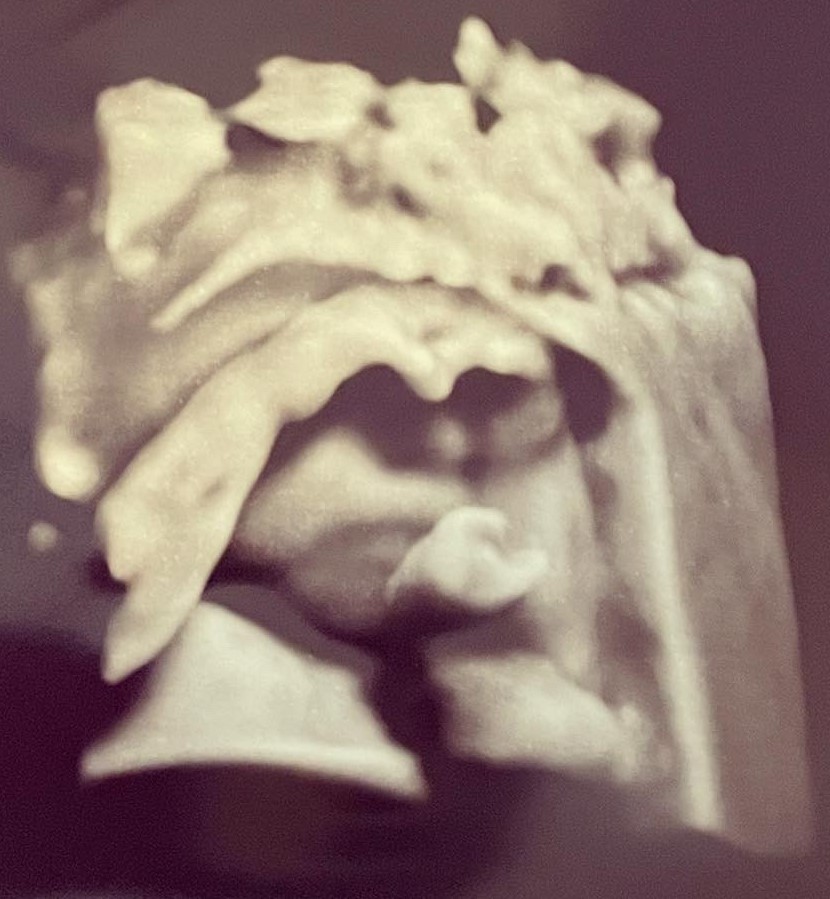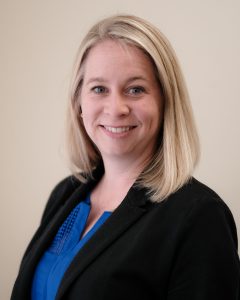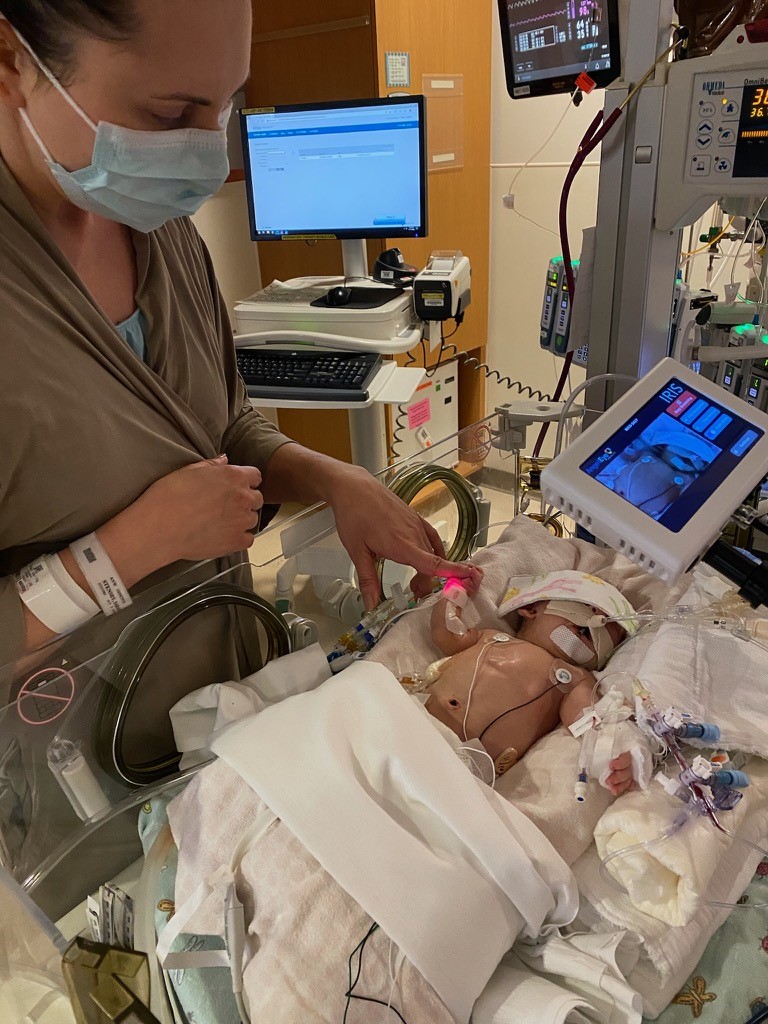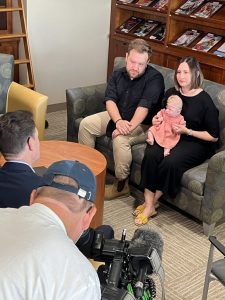In 2022, when Sarah Stensby became pregnant at age 40, she and her husband Jesse knew the pregnancy was at higher risk for complications. However, they never could have predicted the journey that laid ahead.
The Stensbys learned their unborn daughter Aria tested positive for Turner syndrome during a 10-week DNA blood test, so they were referred to the Midwest Fetal Care Center (MWFCC), a collaboration between Allina Health and Children’s Minnesota. Turner syndrome is the most common sex chromosome abnormality in females, occurring in 1 in 2,000 to 2,500 live female births. The rate of miscarriage is 98% and for the 2% of babies that survive, the syndrome can cause a variety of developmental problems, including short height, failure of ovaries to develop, and heart defects. Baby Aria made it to 12 weeks gestation, so the doctors were encouraged she was in that very small percentage of survivors.
Pulmonary complications detected

Then at 16 weeks gestation, an ultrasound revealed another diagnosis: an abnormal lung mass that was suspected to be a congenital pulmonary airway malformation, or CPAM. It’s a mass of abnormal fetal lung tissue usually located in one lung and does not function as normal lung tissue. Aria then developed hydrops, a condition where large amounts of fluid build-up in a baby’s tissues and organs causing extensive swelling.
For three weeks, specialists at MWFCC prescribed weekly maternal steroid injections to shrink the lung mass and relieve the hydrops. At one point, the mass on Aria’s lung was so large it was compressing her heart and made it difficult for doctors to see it beating. Evaluating the heart was critical because half of patients with Turner’s syndrome have some sort of heart defect. As the lung mass shrunk from the steroid injections, doctors were able to see Aria’s heart on an echocardiogram and diagnosed her with coarctation of the aorta. This is a condition that occurs in 1 in 10 babies with Turner’s syndrome and would require surgery shortly after birth.
A multidisciplinary team of specialists
Many specialists weighed in during Sarah’s pregnancy, but the central care team for Sarah and Aria included Dr. Lisa Howley, director of the fetal cardiology program, Dr. Joe Lillegard, pediatric general and thoracic surgeon, and Dr. Saul Snowise, maternal-fetal medicine specialist.
“Seeing all of these diagnoses together – it’s exceptionally rare,” said Dr. Howley. “Personally, I haven’t seen it before, and I can’t find it described in the medical literature. It’s the kind of situation that you might see once in your career or once in a decade.”
“I can’t even imagine what it would look like if we had to have all of Aria’s issues discussed by different teams at different hospitals,” said Jesse Stensby. “It would have been a nightmare. It was good to know we had such a capable medical team working together.”

Another complication: Intrauterine growth restriction
Around 28-30 weeks gestation, Aria received a fourth diagnosis: she stopped growing due to a condition called intrauterine growth restriction. This meant Aria’s fetal weight was estimated to be below the 10th percentile for the gestational age.
At 33 weeks, Sarah was admitted to The Mother Baby Center at Abbott Northwestern and Children’s Minnesota for three-times-a-day monitoring of Aria. She was there for eight days, reaching the goal of keeping Aria in-utero until 34 weeks gestation.
A birthday unlike any other
Aria’s scheduled delivery ensured that every one of the nearly 40-person team of specialty doctors and care team members would be present for the delivery. The medical care team had planned for every conceivable scenario. And yet with this unprecedented set of compounding complications, no one knew exactly what would happen until the moment arrived.
The Stensbys were comforted that there was, “a back-up plan to the back-up plan.” “From nurses to social workers, we heard them say, ‘We know about you, we’ve been expecting you, we’ve been planning for you for so long. We’ll be ready when it’s time,’” Sarah said.
After a swift and successful C-section delivery of 3-pound, 14-ounce Aria, she was whisked to the Children’s Minnesota pediatric operating room for immediate lung surgery. During surgery, Dr. Lillegard clearly saw that Aria’s lung mass was not a CPAM, but instead an even rarer condition called bronchopulmonary sequestration (BPS). This was actually great news, as BPS is a far less life-threatening condition and it can be easily corrected by removing the nonfunctioning tissue. This diagnosis meant Aria has two normal and fully functioning lungs.

Next up: Heart surgery
Once Aria recovered from lung surgery, she spent weeks in the Children’s Minnesota neonatal intensive care unit growing to 6 pounds to make her eligible for cardiac surgery to correct the coarctation of the aorta. The cardiac surgery was performed by Dr. David Overman, chief of the division of cardiovascular surgery at Children’s Minnesota, and it was a success.
Time to go home
Two weeks after her heart surgery, baby Aria was fully recovered and ready to go home with a special feeding tube placed into her stomach.
Today, Aria continues to require frequent medications, gets nutrition via a feeding pump, and has many appointments with various specialists. The MWFCC medical team is thrilled with Aria’s success. “Sarah and Jesse bravely faced overwhelming challenges during their pregnancy with an unwavering commitment to their daughter,” said Dr. Howley. “What an incredible story about a very special little girl.”
Aria’s family shares her story with Fox 9
Watch Aria’s story on Fox 9.

Doctors and healthcare providers call for 24/7 patient referral, admission and neonatal transport assistance. Learn more.